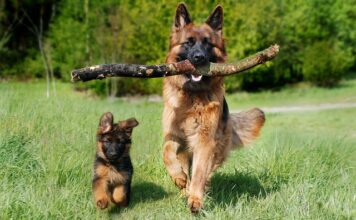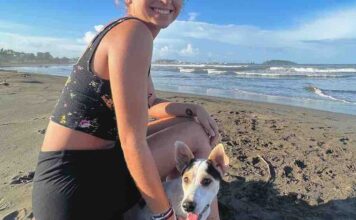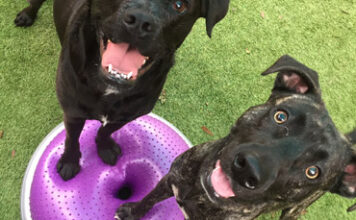
With the holidays upon us, Dog Tired thought it would be a good idea to review some dog and children safety tips as many of us will be having company over these next few weeks. Please feel free to review our previous blog post about more general Holiday Safety Tips here.
There are an estimated 4.7 million dog bites in the United States every year, according to the ASPCA, with one third of those bites delivered by the family dog. Approximately 800,000 of those bitten seek medical attention, with over half of these cases being children ages 5-9. Even if your dog may be used to interaction with kids, it does not mean that they may tolerate new children in the same way. While supervision is crucial, it is not enough. Adults supervising must be able to identify early warning signs and intervene. In fact, Robin Bennett, one of the co-writers of the Dog Gurus program, has stated that in 95% of the bite cases she’s consulted on, the parent was supervising and standing within 3 feet of the child and dog.
Adults must understand dog body language in order to accurately assess the situation. Here are some quick tips that will help you, or others you know, better identify a dog’s behavioral state while supervising child interaction:
- Loose, relaxed, wiggly body language shows that a dog is comfortable. Curves in your dog’s body are a good indicator that things are going well. Stiffening and/or freezing is a warning sign and requires immediate intervention between the dog and child.
- Be aware of stress signals including: yawning, lip licking, and half-moon eyes. While the first two behaviors may be normal in certain circumstances, anytime you see a dog demonstrating these behaviors outside of those circumstances, it’s an indication that the pup is stressed. Seeing the whites of their eyes, or half-moon eyes, is another indication that the pup is stressed. All of these are signals to intervene.
- Listen for growling or stressed vocalizations. Although many owners may brush-off their dog’s growling by saying that they are “grumpy,” even if a dog may growl often, this is still a sure sign that you need to quickly intervene.
It is equally important to monitor the children’s behavior as well. Make sure that they do not startle or hurt the dog, whether intentionally or accidentally. Playing inappropriately should also be avoided; some children find aggressive responses such as the dog snarling or growling to be funny and will repeat whatever actions caused the response. As previously stated, any aggressive display is cause for immediate intervention and should be deterred on both sides. Interaction around resources such as toys and food that the dog may feel protective over should be avoided. Resource guarding can lead to aggressive reactions, so it is best to steer clear of any possibly negative situations.
Practice basic obedience training with your pup. Having your dog be able to sit, come, lie down, and leave-it will aid in all guest interaction and can be especially helpful with kids. Your pup should also have a quiet space where they can be by themselves. A dog that is uncomfortable may try to make the smart decision of exiting an interaction or situation; make sure that this option is available to them.
Remember that dogs are pack animals. While you may have established yourself as the pack leader in their eyes, often times a dog will view children as either equal or lower in the pack than themselves. This can cause them to ignore a child’s command or illicit other actions to show dominance, such as bumping into them or even baring their teeth and/or biting. Adopting a zero tolerance policy for any dog aggression as well as avoiding sources of conflict (food bowls, toys, etc.) while maintaining active and educated supervision, are the best way to negate potential bites.







